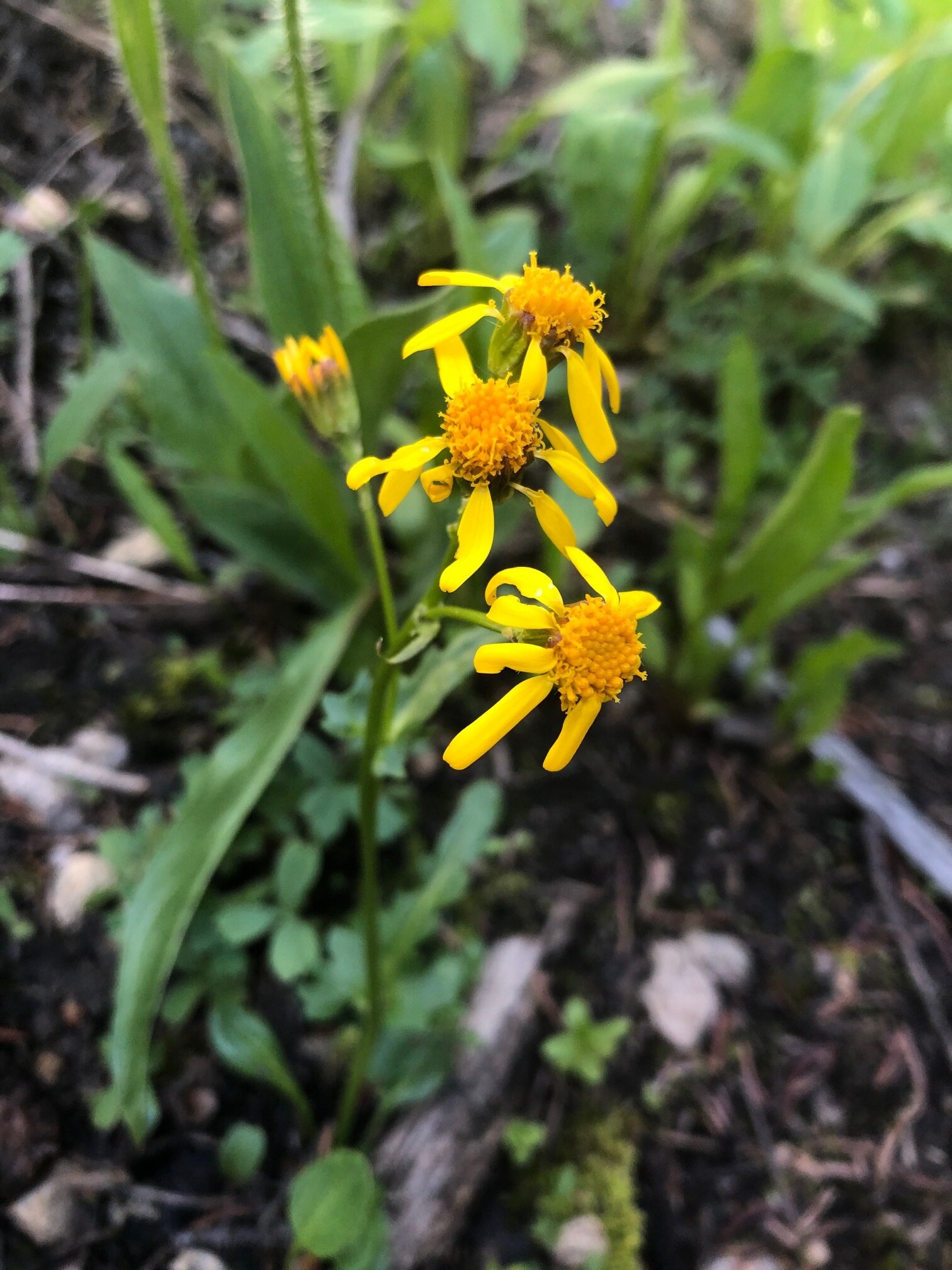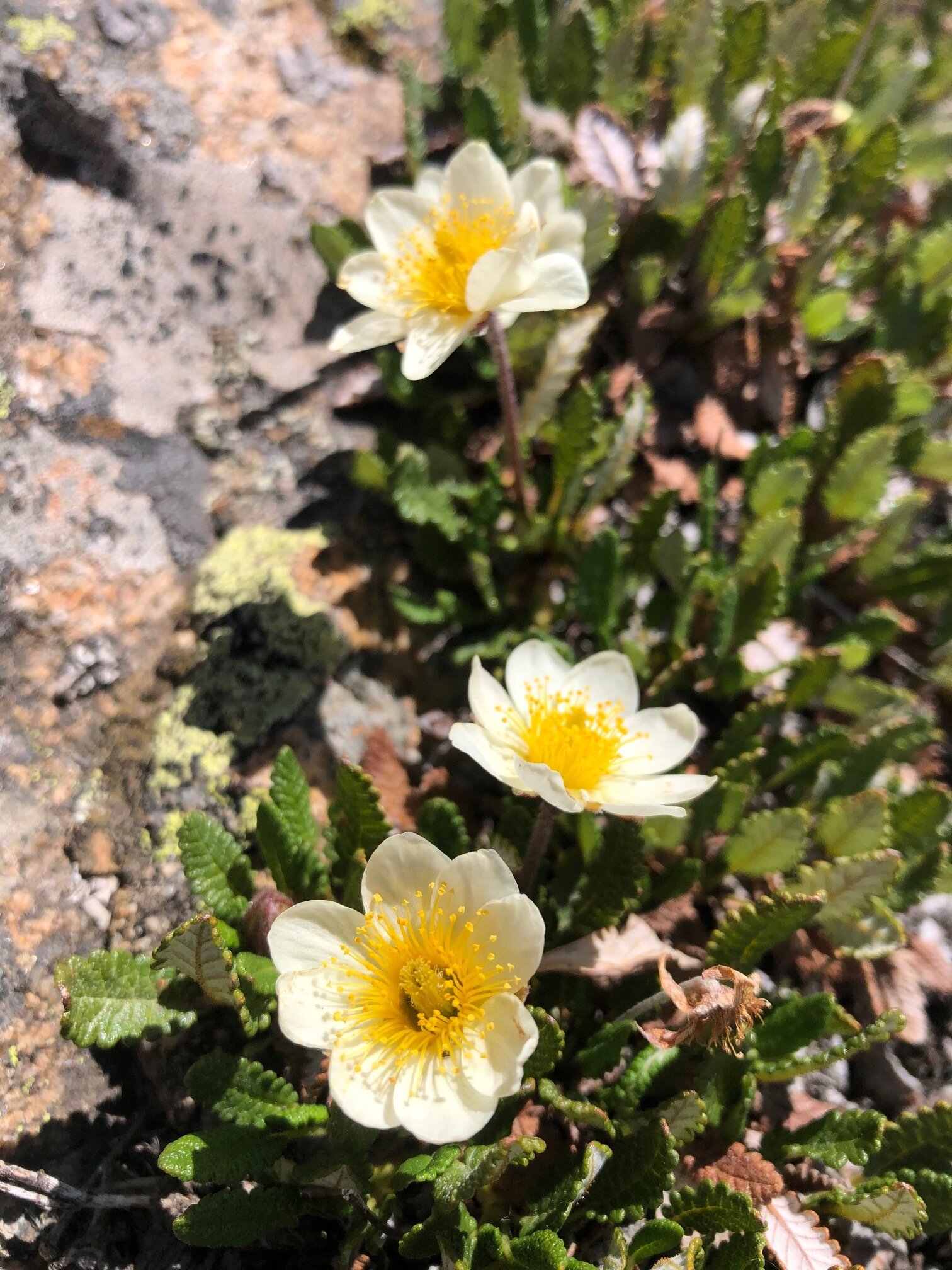Ranunculus adoneus, June 26, 2020
R. adoneus, July 2, 2020
Common & scientific name
Alpine buttercup, Ranunculus adoneus
Family
Buttercup, Ranunculaceae
Location
Graham Gulch, 11,200’
Fun, weird, helpful, or little known fact
This beaming buttercup emerges along the edges of snowfields immediately after the snow melts, and sports fine, thread-like leaves (compared to its cousin, R. escholtzii). The flowers of the Alpine buttercup display heliotropism; that is, they track the sun's movement from early morning until mid-afternoon. Flowers aligned parallel to the sun's rays reach average internal temperatures several degrees Celsius above ambient air temperature, and attract more pollinators (in this case, flies) more often as a result.



































